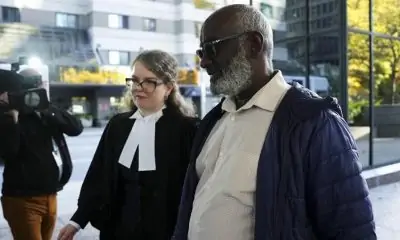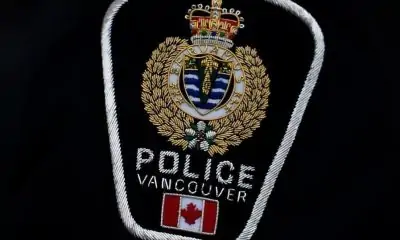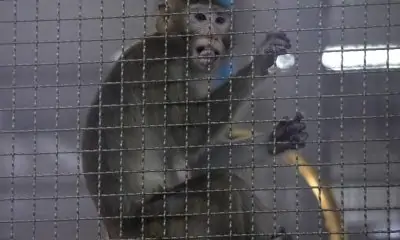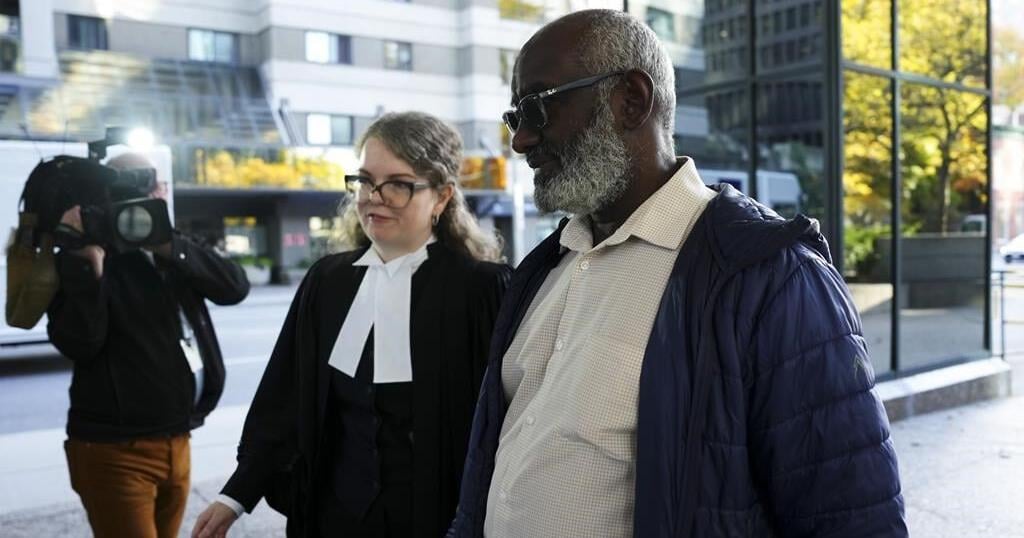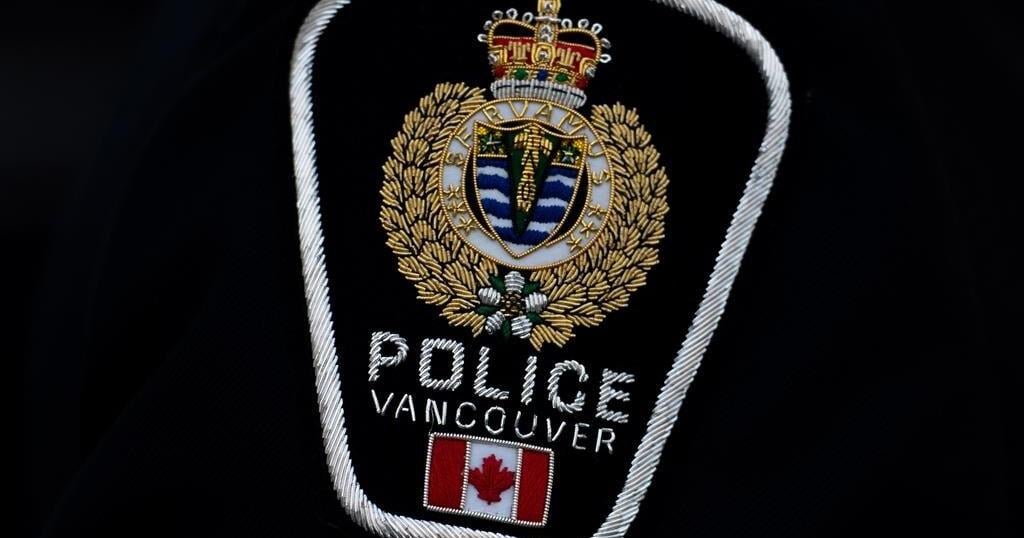LONDON — The queen who ruled the United Kingdom and served as Canada’s head of state for seven decades was carried to her final resting place on Monday after a grand state funeral attended by world leaders and watched by everyday people across the globe.
Thousands of mourners packed the streets of London to get one last look at the queen’s flag-draped coffin, topped with the Imperial State Crown, sparkling with almost 3,000 diamonds, and the sovereign’s orb and sceptre. They lined the roads on the way to Windsor Castle, where she was reunited with her parents and buried next to Philip, her husband of nearly 74 years.
On Monday morning, a bell tolled 96 times — once for each year of the queen’s life — to mark the start of the United Kingdom’s first state funeral since Winston Churchill’s. Royal Navy sailors drew the gun carriage carrying the late queen’s coffin to Westminster Abbey, with the queen’s son, King Charles III, and his sons, Princes William and Harry, walking behind as bagpipers played.
“Here, where Queen Elizabeth was married and crowned, we gather from across the nation, from the Commonwealth, and from the nations of the world, to mourn our loss, to remember her long life of selfless service, and in sure confidence to commit her to the mercy of God our maker and redeemer,” the dean of the medieval abbey, David Hoyle, told mourners.
In his sermon, Archbishop of Canterbury Justin Welby paid tribute to the queen’s “loving service,” her religious faith and her ability to touch lives. Near the end, he quoted a song by Vera Lynn and echoed the closing words of the queen’s 2020 address to the nation during the COVID-19 pandemic: “We will meet again.”
The massive Gothic cathedral fell dead silent as two minutes of silence were observed in the abbey and throughout the U.K. Afterwards, the King stood in silence as the 2,000 or so members of the congregation, including his wife and family, sang “God Save the King.”
Prime Minister Justin Trudeau and his wife, Sophie Grégoire Trudeau, officially led the Canadian delegation that was ushered into the church in the hours before the funeral got underway.
Gov. Gen. Mary Simon and her husband sat a few rows behind the King and other senior royals, while a procession of decorated Canadians — including the holders of the Victoria Cross, George Cross and Orders of Chivalry — walked through the church on the way to their seats. Order of Canada holders actress Sandra Oh, Olympian Mark Tewksbury and performing artist Gregory Charles walked near the front of the procession.
Canada’s delegation also included former governors general Michaëlle Jean and David Johnston, as well as former prime ministers Kim Campbell, Jean Chrétien, Paul Martin and Stephen Harper.
After the funeral, King Charles and the queen’s other children, grandchildren and young great-grandchildren accompanied the coffin on a military procession from Westminster Abbey as crowds of people, many of whom had been camped out for days, stood in respectful silence.
Members of the RCMP rode horses near the front of the procession that also included uniformed armed forces members from Canada and around the Commonwealth. A handful of the queen’s relatives who have served in the military were among those in uniform for the procession, while others were dressed in black, like many of the dignitaries who attended the service.
Lt.-Col. Ryan Hartman, a soldier from Ottawa, said after the event that getting to attend the service and march in the procession was “surreal.”
“I find myself having the honour of sitting with kings and queens and heads of state and people of significance,” said Hartman, who is commanding officer of the Stormont, Dundas and Glengarry Highlanders. “It was humbling.”
Hours after the service, he said he was still processing what it meant.
“It’s something I will take away and never, ever forget,” he said. “I want to take this back to my family and my children.”
Lt.-Col. Drew Beauchamp, a member of the Calgary Highlanders, said he was moved by the number of people who lined the routes “to get one last look at Her Majesty.”
“From the looks on their faces, there was a lot of deep sorrow, deep reflection,” he said.
The queen, he said, was not only a leader and a veteran, but “an exceptional woman and someone who devoted her life to service,” he said.
The procession slowly made its way past major landmarks, including Buckingham Palace, where the queen lived throughout her reign. The toll of bells rang out through the streets that were mostly silent aside from the sounds of the ceremonial march.
Farther away, outside the barricades, a booming gun salute from Hyde Park echoed in the streets, while the distant sound of a military band drifted down to those trying to find a way in or gathering around screens set up in public squares.
The last leg of the queen’s final journey saw her transferred to a hearse on the way to Windsor Castle, where she was to be buried near St George’s Chapel.
People applauded as the hearse arrived at the castle and passed in a procession through the estate. The procession passed by one of the queen’s saddled Fell ponies and two of her pet corgis, in a nod to her well-known love of animals.
The state funeral marked the culmination of 10 days of tributes and mourning following the queen’s death on Sept. 8 at the age of 96.
Dignitaries and everyday mourners alike have poured into London in recent days to pay tribute to the U.K.’s longest-reigning monarch and Canada’s most long-standing head of state.
In London, an entire park near Buckingham Palace was filled with floral tributes, while people at one point were waiting up to 24 hours in line for a chance to view the queen’s casket at her lying-in-state at Westminster Hall.
Tim Thompson of Fredericton was among the members of the public who camped out for the procession. He had set up a tent on the flag-lined road leading to Buckingham Palace early Sunday morning to ensure he would get a good view.
As a military member with the Cadet Instructors Cadre, he said it was worth spending a night out in the cold in order to pay his respects to Canada’s former commander-in-chief and head of state.
While the event is a sad one, he said he was proud and happy to see different nations come together to mourn the queen.
“We have a shared grief that we’re going through, so it’s nice to see that camaraderie between Canadians, Australians and British people,” he said.
This report by The Canadian Press was first published Sept. 19, 2022.
Morgan Lowrie, The Canadian Press
Related



